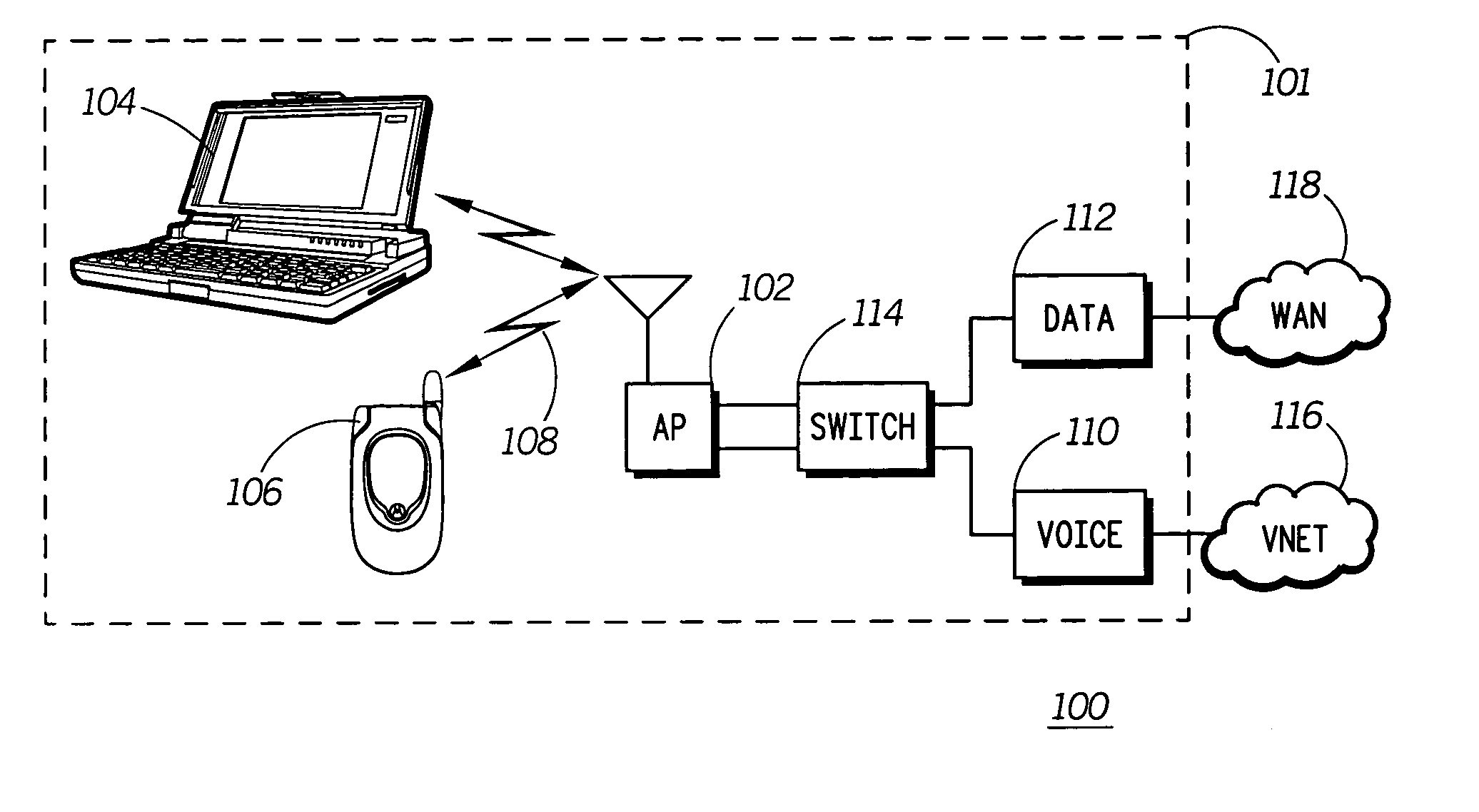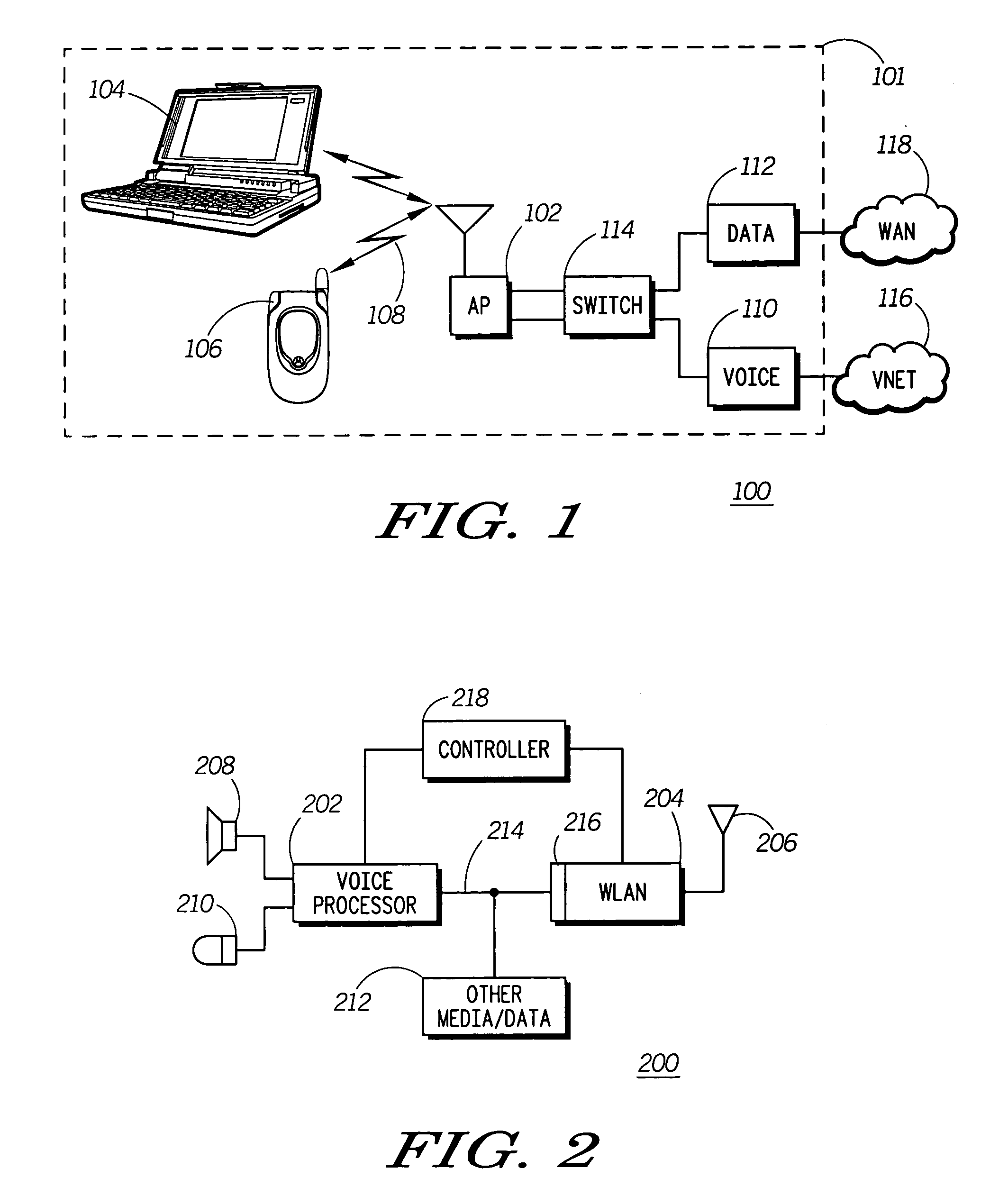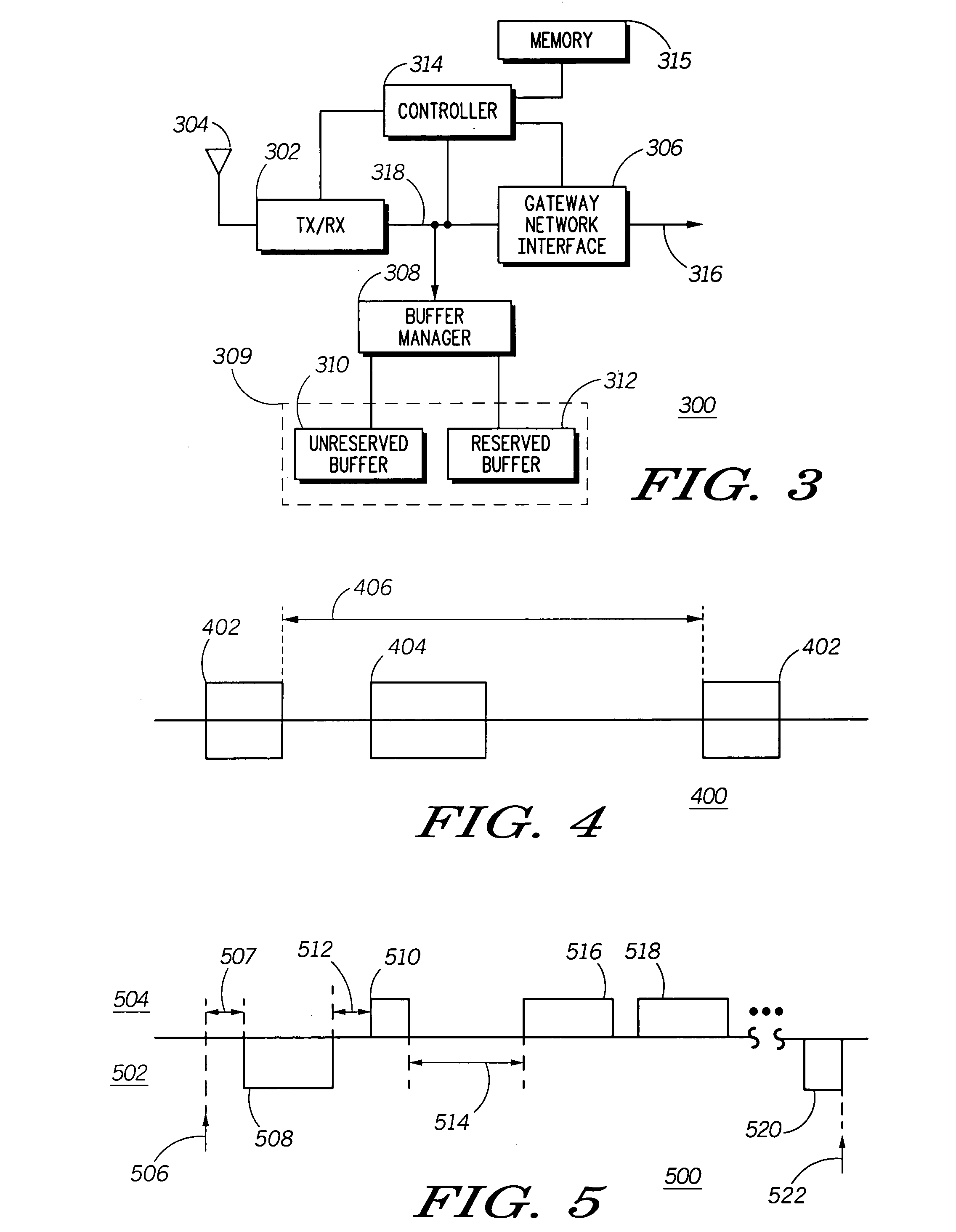Hybrid power save delivery method in a wireless local area network for real time communication
a wireless local area network and power saving technology, applied in data switching networks, high-level techniques, wireless commuication services, etc., can solve the problems of not providing the power savings required to justify the complexity, the approach can be complex to implement, and the power consumption of handheld devices
- Summary
- Abstract
- Description
- Claims
- Application Information
AI Technical Summary
Problems solved by technology
Method used
Image
Examples
Embodiment Construction
[0024] While the specification concludes with claims defining the features of the invention that are regarded as novel, it is believed that the invention will be better understood from a consideration of the following description in conjunction with the drawing figures, in which like reference numerals are carried forward.
[0025] The invention solves the problems associated with the prior art method of scheduled operation by allowing a more flexible use of scheduled and unscheduled transactions. The mobile station first establishes a scheduled stream to be used in association with a high priority access category flow, such as a real time voice call or a video stream, for example. Accordingly, the mobile station enters a low power mode, and waits for a scheduled service period to begin. The scheduled service periods occur at regular intervals and have a predetermined duration. Occasionally the access point may have to terminate the service period before all buffered data can be deliv...
PUM
 Login to View More
Login to View More Abstract
Description
Claims
Application Information
 Login to View More
Login to View More - R&D
- Intellectual Property
- Life Sciences
- Materials
- Tech Scout
- Unparalleled Data Quality
- Higher Quality Content
- 60% Fewer Hallucinations
Browse by: Latest US Patents, China's latest patents, Technical Efficacy Thesaurus, Application Domain, Technology Topic, Popular Technical Reports.
© 2025 PatSnap. All rights reserved.Legal|Privacy policy|Modern Slavery Act Transparency Statement|Sitemap|About US| Contact US: help@patsnap.com



